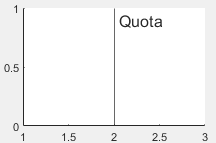
(dot = short dash) and # (= small amount of blank space). You may combine elements _ (underscore = long dash), - (hyphen = medium dash). Line sales1 sales2 year, lpattern("_-." "_#") You may also create your own line pattern with the help of a "formula", such as in The last option is just in case you wish to draw an invisible line for some reason or other. Other pattern styles are dot, dash_dot, shortdash, shortdash_dot, longdash, longdash_dot or blank. With the first line being drawn as a solid line and the second as a dashed line. Line sales1 sales2 year, lpattern(solid dash) The pattern of the line may be changed via option lpattern, such as in You may also wish to change the thickness of the line. In a line chart, you may distinguish different lines by colour or pattern.

graph twoway tsline high low, tlabel(01apr2001 01jul2001 01oct2001, format(%tdmd) ) Here we change the format of the date to be month and day.

Option where we can supply in valid format that we would supply We can change the format of the display of the date variable using the format() graph twoway tsline high low, tlabel(01apr2001 01jul2001 01oct2001) Ttick(), tmlabel(), tmtick(), and tscale(), seeĭetails. Other options that can be used in a similar way include For example, say that we wanted the x axis to be labeled Understand that the x axis is a date variable and are much easier to In addition to these benefits, there are options we can use that Next, note that the labels for the xĪxis are labeled much better with more logical values having been chosen. This is because Stata knew, from the tsset command, what the time Note that we did not need to specify date in the command. Now we can use graph twoway tsline to graph the data. Time variable: date, 02jan2001 to 31dec2001, but with gaps To tell Stata that the variable date represents time and that its Graph twoway line we can use graph twoway tsline which is specifically designed for making line graphs where the Labeling the x axis since these are date values. Also, it could be difficult to change the values Properly labeled with the dates, but the selection of the values labeling thisĪxis could be better.

We could use the graph twoway line command to graph the high and low closing price for the year, as shown below. High and low trading price for a given day and date which is a date This file has variables like high and low that represents the This data file contains data for all of the trading days in 2001. This FAQ shows examples of graphing data where the x axis represents dates.įor these examples, we will use the sp500 dataįile that comes with Stata and we can use it via the sysuse command.


 0 kommentar(er)
0 kommentar(er)
